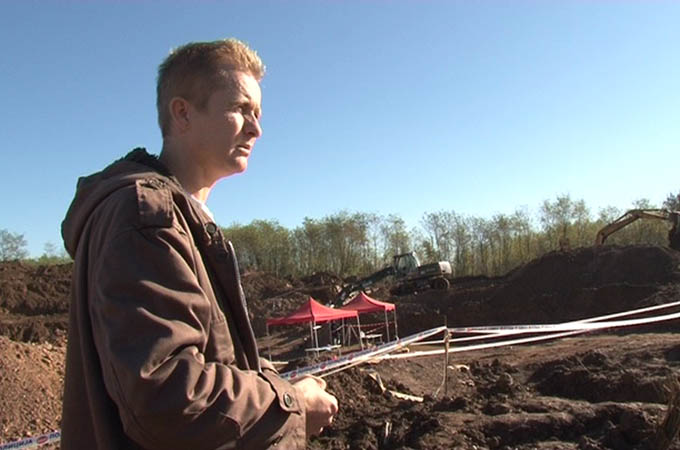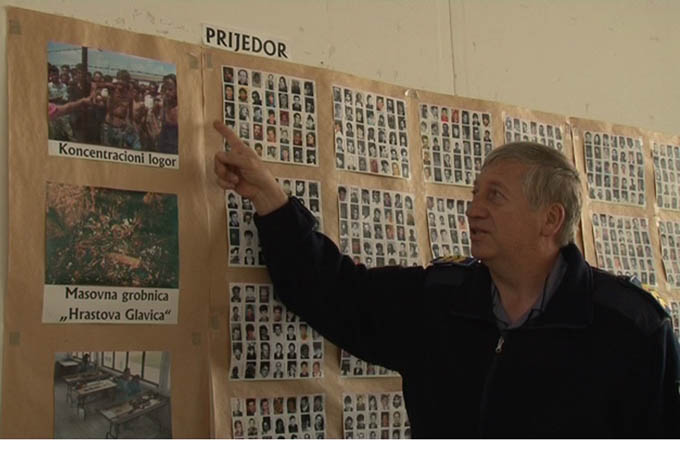Finally justice for Bosnia’s Muslims?
The uncovering of a mass grave in Prijedor could reveal some of the darkest secrets from Bosnia’s ethnic conflict.

As members from the International Criminal Tribunal for the former Yugoslavia (ICTY) gather in Sarajevo to mark the tribunal’s 20th anniversary, the uncovering of a mass grave near the northern Bosnian town of Prijedor could yield vital evidence for the former Yugoslavia’s war crime trials.
Forensic teams are confident they have found one of the biggest mass graves from the deadly war that gripped the region in the 1990s. As of late November, the bodies of over 400 victims of Serbia ethnic killings have been found at the Tomasica site.
For those like Sudbin Music, a concentration camp survivor, this is a particularly difficult place to be.
After surviving the ethnic cleansing of his village, during which his father was killed, Sudbin and his younger brother were taken to the Trnopolje concentration camp. “I was a normal young boy, 18 years old, and at the best moment in my life, at the end of the 20th century something unacceptable happened to us,” he said as he stared into the grave.
As the secretary of Prijedor 92, an NGO, which supports families of former concentration camp detainees, his daily job is to liaise between forensic teams and the local community. “I was here two days ago and my neighbour, Hassan, was excavated,” he said. After a brief pause he added, “Two hours later, I went downtown to the city centre and I met his mom. She asked me, ‘Sudbin is there any news?’ And I answered no Sura, nothing’s new. It was too difficult for me to give her that information.”
 |
| Sudbin Music at Tomasica mass grave [Flaminia Giambalvo/Al Jazeera] |
Sudbin is one of Bosnia’s thousands of “returnees”- those who fled the country during the war and have come back over the past decade. However, he and many of the other Bosniaks living in the Serb dominated Republica Srpska, no longer feel they belong in their own country.
Lack of recognition
Rumours about the existence of the Tomasica mass grave have existed for decades. But in the absence of witnesses to provide information as to its exact location, local authorities decided that it was not possible to begin an excavation.
Begnt Norborg, a journalist for the Swedish State Broadcaster SVT, reported on its existence in 1996. After being tipped off by a human rights group, he and his team headed to Bosnia to investigate the story. He drove to the outskirts of Prijedor where he found a few houses owned by Croats. Many of them had seen trucks filled with bodies, driving to Tomasica and leaving empty. One resident had also been a close friend of a Serb who worked at the Tomasica site and told him stories of mass executions, which took place there.
Based on evidence provided by the recent excavation, the team from the Chief Prosecutor’s Office has been able to confirm these eye-witness accounts.
When I visited Bosnia earlier this month, I noticed a group of houses less than 100 metres from the Tomasica site. I asked Sudbin who lived in those houses. “These were the first houses built here, they are owned by Serbs,” he said. Then he looks at the 800 square metres of dug up soil and added, “How could they not have known?”
But secrets are hard to keep, and it was a former Serb soldier, originally part of the team tasked with hiding the bodies, who came forward in April unable to live with the guilt he has carried for 21 years.
Eye-witness statements have now established that the grave originally contained 1,000 bodies, some were stolen from the site and re-buried at a nearby grave to cover up the crime.
Bosnia’s ethnic conflict was brutal; as Yugoslavia disintegrated, Serbs, Croats and Bosniaks fought for control of the land. In the region of Prijedor, where this grave has been found, it has been determined that it was the Serb forces that were responsible for most of the deaths as they forced out Croats and Muslims.
A UN report, which compares figures from the 1991 official census with a population count dating 1993, shows a decrease of the Muslim population in the district of Prijedor from over 49,000 to just over 6,000.
To this date, local authorities from the Republika Serpska, deny that ethnic cleansing of Bosniaks took place in this area. In this city, there are no memorials to commemorate non-Serb victims of the war. For over eight years, people have asked local authorities for permits to install a memorial dedicated to the Muslim and Croat war victims, but so far none have been granted.
 |
| Dzafic Nusret, police officer and concentration camp survivor [Flaminia Giambalvo/Al Jazeera] |
Murder without trial
More than 1,000 people from Prijedor are still missing.
Forensic teams are working tirelessly, hoping the evidence will not only bring peace to the families, but also provide answers to questions being asked in the trials in the War Crimes Tribunal in The Hague.
The depth at which they were buried means that many of the bodies have been preserved in a mummified state and could provide some of the best evidence to prove crimes committed in this area.
Once excavated, the bodies are taken to a nearby morgue for DNA testing. On my visit to the morgue, I met Dzafic Nusret, a local police officer, who was collecting evidence on the abduction of bodies. He didn’t speak English, but pointed to a photo hanging on the wall. It was one of the conflict’s iconic images, showing an emaciated detainee standing behind barbwire. “Trnopolje, year 1992. I was standing right next to him,” he said. He told me about the people he met while in Trnopolje – many of whom he had personally identified over the past few weeks. He added, “I hope it will be proven that genocide took place here. We did not deserve this to happen to us.”
Tomasica is one count of the indictment in the trials of former Bosnian Serb leaders Radovan Karadzic and Ratko Mladic, who stand accused of genocide and crimes against humanity in eight municipalities, including Prijedor.
In 2012, the Appeals Chamber dismissed the count of genocide in the municipality of Prijedor, on the basis that the prosecution was incapable of proving certain types of genocidal acts as well as “relevant genocidal intent” by Karadzic. The Appeals Chamber unanimously reinstated this count on July 11.
In total, 16 Bosnian Serbs have been found guilty in the area of Prijedor, where Tomasica has been dug up. Most of these were leaders and high-ranking generals believed to be responsible for inciting ethnic hatred, and ordering many of the war crimes. However, the uncovering of Tomasica has opened a new set of questions as to who carried out the orders.
Public recognition of the past is the only way to shift the stigma attached to a race or nation onto individuals and allow the reconciliation process to begin. For the time being, ethnic tensions in the former Yugoslvia are still a dangerous spark, buried under the thin soil of the many war memorials.
The uncovering of Tomasica has opened the old wounds of the country’s violent past. The way in which the ICTY and local authorities will handle its aftermath will bear heavily on the tribunal’s legacy for the next two decades.
Flaminia Giambalvo is a reporter/producer for Islam Channel and a freelance journalist.
